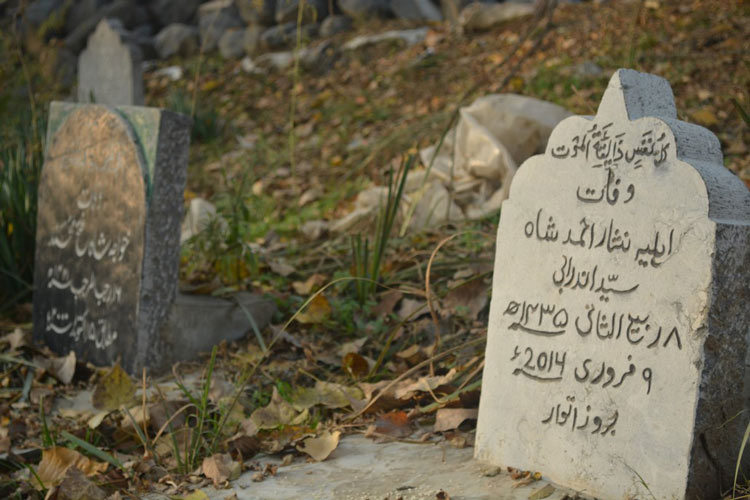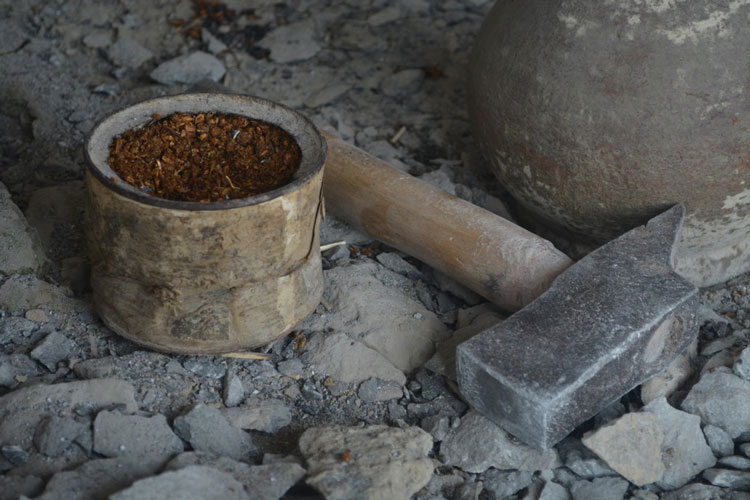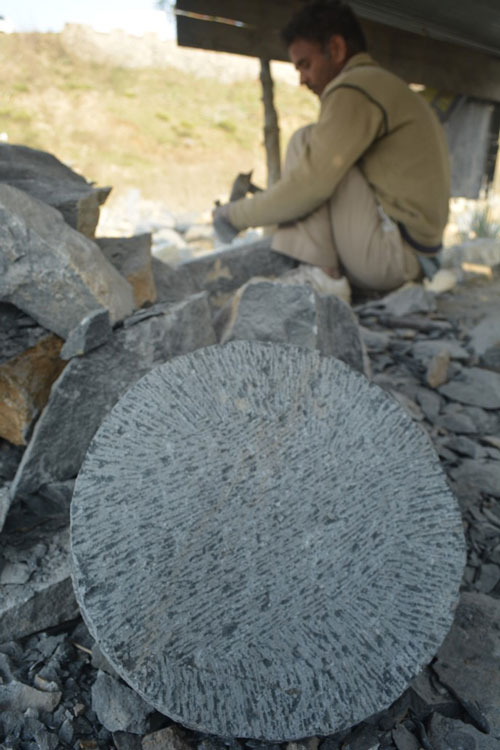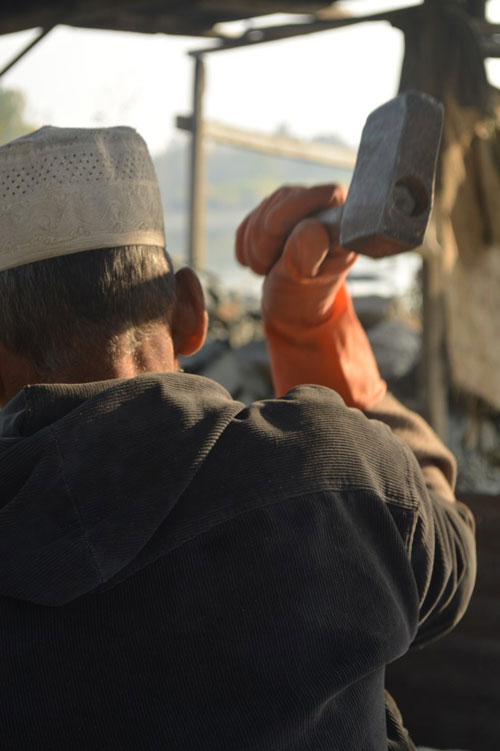
Go World Travel is reader-supported and may earn a commission from purchases made through links in this piece.
Man is tough. Some men are strong, resilient, and stubborn, with the will to break the hardest of stones and carve them into different shapes. It is fascinating how, with a few simple tools, man can break down a mountain into tiny irrelevant pieces — mountains turned into mortars and pestles.
These pictures try to speak to that confounding mystery, the will of man, which may sometimes be stronger than a mountain, and sometimes more capricious than dust.

Sang Taraash: Stone Carvers in Kashmir
I am from Kashmir, the Indian administered part of the picturesque Himalayas, where there is a lot more to see than mountains, valleys, meadows, rivers, lakes and ancient gardens. Here, there are fascinating people and cultures to discover.
Kashmiris have a special affinity for stones. We build our homes on plinths made of stones, our gardens are decorated with fountains made out of stone, and we bury and remember our dead by carving their names on tombstones.

Master Masons
Since stones surround us so intimately, I have tried to document through my pictures, the lives and routines of the people who work with stones all day. The images capture both the work and life of the stone carvers and also focus on the different types of carving work that these men do in their humble workshops.
Passing these workshops, listening to cling-clang of the mallets hitting the chisels, it’s hard to imagine the pain and the sweat that goes on behind that monotonous yet sweet sound.

On the roadside at a place called Sempora, Pampore along the highway that connects Srinagar, the summer capital of this region, to the rest of India, there are workshops where banker masons, stonemasons who specialize in working on stones, aesthetically create amazing artifacts by their hard work.
These people are sawyers and carvers too. They are master masons. These stone carvers are called Sang Taraash in the Kashmiri language, and they are a dying breed.

Stone carving has been an important part of life in Kashmir, whether it be the veneering technique used in building Kashmiri homes, the curbstones used in pathways or the use of stones in gardens, fountains or other such special structures. Stone has always been here.
The Stone Carvers at Work

has been working stones since he was a teenager. Photo by Mudabbir Ahmad Tak.
Ghulam Ahmad Mir, 55, from Sempora Pampore has been working stones since he was a teenager. “The young generation won’t work with stones anymore, this is a job that requires patience and diligence. Young people are short on both these days.” Ahmad Mir said.
The stone carvers of Kashmir shape a rock into a beautiful yet useful, simple yet elegant, subtle yet strong stone. A stone that is so much a part of our lives, yet we don’t even think twice about the hard work these men put into every hit on the chisel.

Ghulam Ahmad Mir worked as an apprentice with a stone carver for four years before beginning to work on his own. He has been smoking hookah and carving stones ever since. “My father, God rest his soul, brought me here. Those days fathers made men out of their sons. Now I see mobile phones and motorbikes and boys. No men.” Ahmad Mir said.


Stone carving is the oldest known work of representational art. Carvings done into rock and petroglyphs have survived for thousands of years. By the controlled removal of stone from pieces of rough natural stone, shapes are formed that can then be used for engineering purposes.


Here in Sempora, different types of stones are carved. Kene Kaen, veneering stones, are produced in bulk. These are used in veneers and plinths. In these workshops, Braande Kaen, curbstones are also produced in large numbers.


Ali Mohammad, a 35-year old stone carver from Zewan, has been giving shapes to rocks since he was a kid. “My father was also a Sang Taraash. I used to go with him to his workshop, and with his mallet & chisel, I would bang at stones. I love this work.” Mohammad said.



Working with Kanaas. The work is tough and requires sturdiness and power, as well as a sharp eye and patience.

Ali Mohammad has taken a loan from a bank to get his son admitted to an engineering college. “He didn’t want to do this. So I thought he should become an engineer. I would carve stones and he would use them in the structures he builds.” Mohammad said, with a spark in his eyes.

The Carver and His Tools
Carving tools include a mallet, chisels and a metal straight edge (for making flat surfaces). Chisels are of various types depending upon their use. They all need to be sharp, though.



Mohammad Shabaan specializes in making millstones. He has no complaints against anyone. “Allah tala Karin saarni raham (may Allah bless all).” Shabaan said.



The Sang Taraash Association, a union of sorts of the stone carvers, has demanded a dispensary be set up near the workshop. The work is dangerous and injuries, though not common, are possible. The government seems uninterested.
The Finished Stone Products



The carvers make all the stones on demand but what they are paid is little compared to the work they do. Although the sales are going down, the stone is still a very important part of our lives, and the Sang Taraash is the master of the stone.
Inspire your next adventure with our articles below:
Author/Photographer Bio: Mudabbir Ahmad Tak is a PhD scholar at the Media Education Research Center, the University of Kashmir in Srinagar, India. He is also an independent journalist and photographer based in Srinagar, with news reports and photographs published in different magazines and newspapers. His portfolio has been published in AfterImage, New York. He has also taught at the Department of Journalism and Mass Communication at the state women’s college in Srinagar. He likes reading, photography and films, and traveling is his passion. Reach him at [email protected].
- Discover Claremont, California Along Historic Route 66 - December 6, 2024
- Three Sites to Soothe the Soul in Kyoto, Japan - December 5, 2024
- 13 Essential Tips For Women Traveling in Morocco - December 4, 2024

I am currently living in Dubai and working as a photographer. Seeing your post reminds me of my younger days and I miss those days when I carved stones when I was younger.
👌 great